Please support Game Informer. Print magazine subscriptions are less than $2 per issue
NBA Live 18

The free to download NBA Live 18 demo kicks off today, giving hoops fans their first look at the EA Sports project that has been under renovation for two years. With a development timeline double that of a typical sports game, NBA Live 18 brings a host of new changes that developer EA Tiburon hopes results in an appealing alternative to the NBA 2K juggernaut.
I spent a few hours checking out the content available for the demo at a recent event at EA, which serves as the full intro to the created-player experience dubbed The One. You assume the role of a hyped college athlete who blew out his knee right before he was about to declare for the NBA draft. The injury forces you to go back to college to rebuild your reputation before trying to impress NBA scouts by playing street ball and in pro-ams like the Drew league. The demo picks up with your character (who you can fully customize) hitting the streetball games with his best friend, Nick Howard and ends with you getting drafted into the NBA.
Here were our five biggest takeaways after playing through the demo.
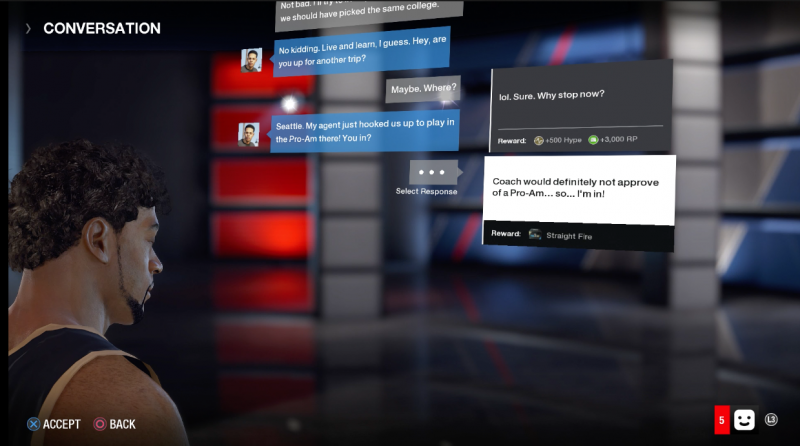
Conversations Drive The One’s Storyline
Over the past several years, NBA 2K’s MyCareer mode has used voice-acted cutscenes to develop the stories of their fictitious protagonists to mixed results. EA Tiburon is going a different direction in The One. Judging from our experience so far, much of the narrative takes place via texting conversations with your friend, agent, coach, fellow players, media types, and others. EA producer Mike Mahar says there are roughly a dozen core characters you interact with on a regular basis, and then a bunch of fringe people as well.
These chats are participatory, allowing you to make binary choices throughout the discussion. Based on how you answer certain questions and the objectives you pick, the story branches in different directions. You may have continued conversations with certain characters, and potentially burn bridges with others. Many conversations end with you choosing between either accepting a crate reward (typically a pair of shoes or other apparel) or earning more Hype, a new leveling system that unlocks the ability to purchase higher tier crates via the store as you rank up.
In addition to these conversations, EA occasionally sprinkles in one of the most annoying sports pundits on the planet, Stephen A. Smith, to talk about your player’s current situation. These First Take snippets lend an air of realism to The One.
Communicating most of the story through conversation trees may rob the story of some drama, but overall it seems to be a flexible system that preserves player agency. We're curious how it holds up over the long run.

Taking A New Approach To Player Progression
As I detailed in a previous NBA Live 18 write-up, EA Tiburon is building a new character progression system that has more in common with games like Call of Duty and Destiny than other sports games.
When first creating your player, you must choose which archetype you want to play as. I chose a Point Shooter in the mold of Steph Curry. This archetype has a “Give and Take” signature ability that allows your player to accrue stackable shot accuracy bonuses the more you dish dimes. The point shooter starts with two upgradeable primary skills – three-point shot and mid-range shot. These are the only skills you can upgrade at the start. As you rank up you can unlock two other primary skills of your choosing. At level 7, I got to choose whether I wanted dribbling or passing to be my next upgradable skill. At level 15, you unlock your final upgradable skill.
After settling on your playstyle, you can alter your height and weight. As you move these sliders up and down, you can see how they affect your initial speed, vertical, stamina, and strength.
When you reach level 25 and 30, you can unlock a secondary skill that can also be upgraded, but only to a lower cap threshold than your primary skills.
As you play games, you earn skill points for upgrading your abilities, the aforementioned Hype for unlocking new tiers of crates, and reward points you spend to unlock those crates.
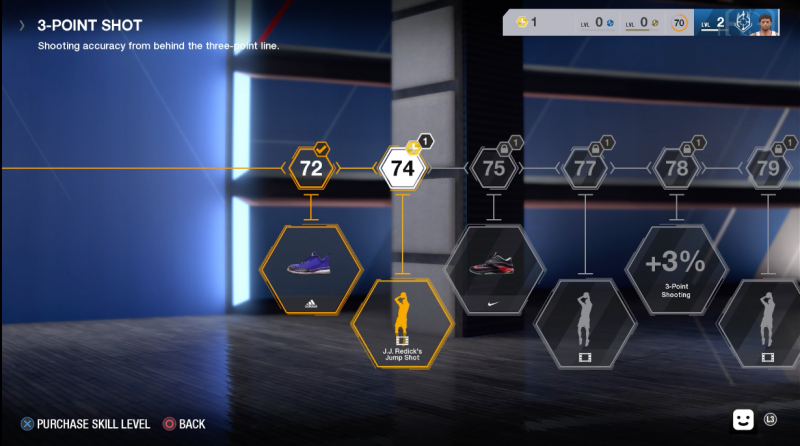
Each time you rank up, you earn a skill point you can put into one of your attribute trees. These aren’t always simple point upgrades like most sports games. Sometimes an upgrade grants you a standard point, other times it may unlock a couple points as well as a shoe or signature animation.
Stacking on top of your skills are traits, which you can think of as passive bonuses not unlock loadout choices in shooters. The choices available to me at the start were Quick Trigger, which gives you a slight shooting boost that gradually diminishes the longer you hold onto the ball; Steal, which adds stealing to your skill set; and Windbreaker, which slightly reduces the stamina you lose while springing from the backcount to the frontcourt. You can swap these traits out before the start of each match, and set up different load outs for playing on the streets or in the league. Each of these traits can be upgraded from bronze to gold and perhaps beyond.
Overall ratings will lock in the low 90s, and EA producer Mike Mahar says the best players at this skill level will play like the best NBA players. When all the play styles are maxed out Mahar’s hope is they all feel distinct. Rim protectors should play very differently from a point shooter. Mixing and matching traits along with your teammates can create interesting stacking bonuses. Should players find exploits, EA has a way to easily tweak the system behind the scenes to address it immediately.
I’ll need to spend a considerable amount of time with this system to determine if it’s an improvement over the standard upgrade systems I’ve seen in other games, but I’m intrigued by someone taking a new approach. Users can create up to five characters as well, so you can develop alts just as you would in a game like Destiny.
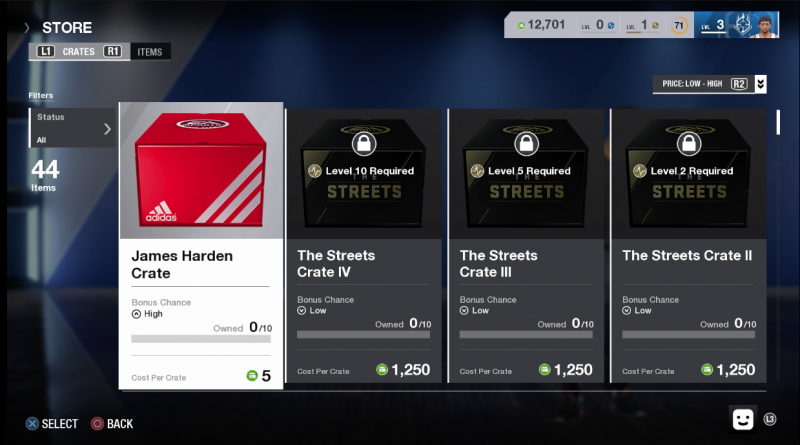
It’s All About Getting Dem Crates
Shooters like Overwatch and Battlefield have won over (and angered) fans with their loot crate reward systems. NBA Live 18 takes a similar approach. The crates you have available for purchase correspond to your Hype level. You can always preview the types of items available in a crate before making the purchase. Street packs focus on urban apparel, and League crates offer more official NBA gear. EA plans to offer other specific crate types throughout the year to celebrate particular players or the release of new apparel/shoes.
We haven’t spent enough time with the crate system to make any hard determination whether it feels exploitative. The crates we had available for perusal featured only cosmetic items. When we asked Mahar if skill-based upgrades like new trait levels would be available in the shop he admitted it’s a possibility, but these will also be available to earn via gameplay in Live Events.
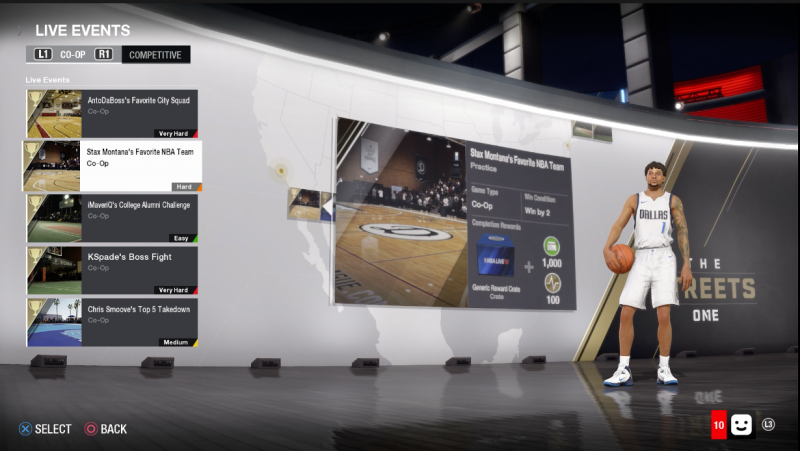
Live Events Add Unique Challenges
It may not be a major element in the demo, but their inclusion gives us an idea of how EA wants to incorporate live events into The One. These one-off events challenge you and a group of friends to win “boss battles” against stacked clubs or other contests. These feats may require you to equip traits you typically don’t take onto the court, and reward you with unique crates that feature limited edition sneakers, unique traits, or even new trait levels that cannot be acquired in the traditional leveling system.
Because EA wants Live Events to drive community creation, right now the company only plans to offer cooperative challenges. If your team fails to pull out a victory, you can grind the challenge until you earn the crate.
Not everyone is interested in multiplayer experiences, so we hope eventually EA incorporates some live events that solo players can tackle as well.
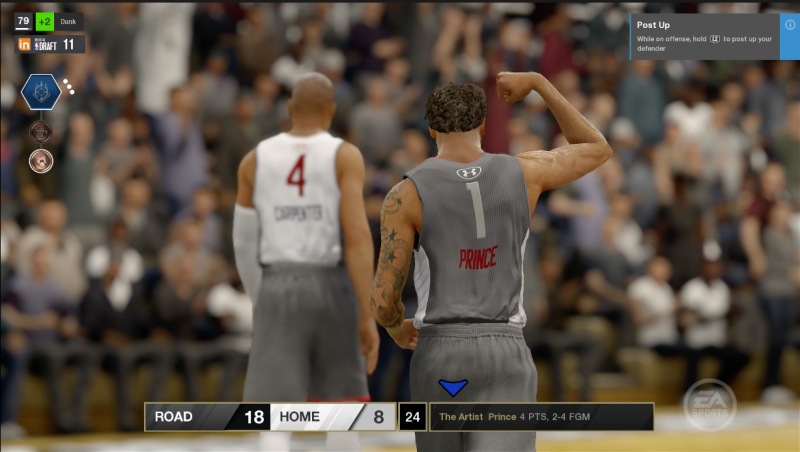
Gameplay Is Much Improved But Has Room To Grow
After playing NBA Live 18 for a few hours, I’m convinced the gameplay is taking a positive step forward. The dribbling mechanic is responsive, the defensive feedback icons make it easier to say in position while defending attacking ball handlers, and I saw a lot more variety in the shot contest animations when players drive into the paint.
While much of the play is improved, I’m not ready to anoint it a serious threat to NBA 2K just yet. Some of the animations still look stiff, especially defensively, and the grading system in The One still feels like it needs some work to iron out rough edges. I saw some instances where passing out of a double team for a wide-open corner three attempted punished me for giving up a good look. Other times, I was docked multiple points while in traffic for giving up an open look to a player the AI just transferred my defensive responsibility to the nanosecond before he took the shot. I’m curious how the gameplay will hold up to more scrutiny as I learn its nuances.
It’s still way too early to hand out a hard grade on NBA Live 18, but one thing I can say unequivocally is this is a unique approach the created-player experience. The unconventional leveling system and incorporation of live events give the game a flavor all its own, which is a positive step forward for a series that has lacked an identity the past decade or so. If these changes sound interesting, check them out by downloading the demo yourself.











